DS: What is The Book of Thrice Dead?
JS: I’m glad you asked! The Book of Thrice Dead is a six-part multiverse apocalypse. At its heart, I think of this as a fantasy story. It has heroes and villains, magic and monsters, and other worlds that intersect with our own. However, it also combines a lot of elements from a wide variety of genres, including science fiction, post-apocalyptic, and plenty of horror. I suppose the nature of exploring a multiverse concept is that rather than having tonal consistency, there’s going to be this eclectic mix. That was the great joy of writing this series. I became an alchemist, playing around throwing different ingredients into the alembie, and discovering this unique elixir that felt like my own.
DS: So, it sounds like you didn’t plan the direction of the series from the outset, but it emerged over time?
JS: Yes. Although I’m a great advocate of structuring your narratives and usually I plan ahead, The Book of Thrice Dead was a much more organic evolution. It began in 2013-14 with writing a book called The Darkest Touch. I was in my final year of university and had been working on this novel in the background. Back then, I did not know what the five act structure was. All my writing just sort of emerged expressively. It was very rough and raw, and very adolescent in some ways, but there was a kernel in the story that I knew really had power. It was the first book I’d written that didn’t feel like merely a carbon copy of Tolkien, or like dead, trope-ridden cliché. This was something that—whilst not original—had a spark in it, and felt like my own. Though I’d drafted full length novels before then, this was my first true novel, and I still think of it that way.
After finishing that first book, the characters kept haunting me. I mean this pretty much literally. They showed up in my dreams. Then they started showing up in my waking life. They demanded to be written. I think a lot of writers, particularly writers early in their self-discovery, experience this. It was my first clue that writing isn’t an act of intellect, but really stories come from somewhere else; we’re just the vessel, the lightning rod, for divine immanence. But that’s a whole topic for another time!
The only problem with these characters coming back to me was—and sorry, a minor spoiler for the first book—so many of them had died. Haha. How could I keep writing about these characters when they were dead? My left, logical brain kept chewing on this problem. The common and obvious strategy was to write a prequel. But I had no interest in doing this. I admire writers who can do a good prequel, but I’m not one of them. I like my stories to move forward. Relentlessly forward. Almost dangerously and crazily forward. So, I had to come up with some kind of metaphysical solution to continue the story, but without invalidating what happened at the end of The Darkest Touch.
And then I had a dream.
I won’t divulge the contents of the dream, because it would spoil a major arc of the books, but suffice to say it gave me the tools I needed to keep the story going in a way that didn’t sacrifice the integrity of the plot. One key thing I will mention, however, is the thirteenth Major Arcana of the Tarot, Death. Any good occultist knows that Death doesn’t mean an ending, it means a new beginning. Death is transformation, the sloughing of the serpent-skin. This, of course, would become the ultimate theme for the series, and give the series its name: The Book of Thrice Dead.
DS: So, you’d found a way forward after writing that first book. How quickly did you write the others?
JS: It took a grand total of eight years to write The Book of Thrice Dead, sort of starting in 2013 and ending in 2021. Along the way, various parts of the series got published in various places, mostly under different names. Like I said before, I did not have a clear view of what I was doing or where I was going. I didn’t know about the five act structure like I do now. I was making it up as I went along, discovering my own writing style, discovering my own identity; I faced loss, chaos, despair, and madness in my personal life, and each new book in the series helped me come to terms with where I was at in that journey and find a way through. I think it’s because of this that, more than any other series I’ve worked on, The Book of Thrice Dead reflects my growth as a person and a writer—maybe even reflects who I am. I could not replicate it if I tried for a thousand years.
DS: So The Darkest Touch became Prince of the Wasteland?
JS: Yes! I actually submitted The Darkest Touch to a publisher in New York: Dark Hall Press. Miraculously they accepted the book and published it in 2014. The book didn’t sell very well. In 2021, I asked Dark Hall if they would be kind enough to return the rights to me, so that I could release The Book of Thrice Dead in its entirety. I was prepared to release the series without the first book in the sequence, I thought I could just about get away with it, but it would be a real shame to miss that critical first introduction with The Prince. Luckily, the guys at Dark Hall Press were very magnanimous, and they let me have the rights back. I actually dedicated Prince of the Wasteland to them. After all, they were some of the first people to believe in me outside of immediate family.
As I mentioned before, the books were published all over the place, or self-released in bizarre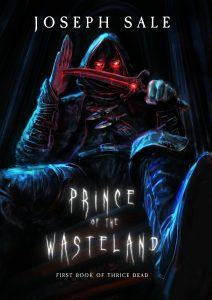 and clumsy formats. I was not only discovering how to write stories, but also how to release them, haha, and the whole business of publishing. The amazing thing is despite my incompetence and how difficult it was for people to read the whole story, there were brave souls who did it! I must thank Iseult Murphy and Christa Wojciechowski in particular for being the most stalwart, awesome friends imaginable. Before this year, they were two of the only people to have read the series end to end. And their encouragement and belief gave me the courage and confidence to give the series the re-release it properly deserved. There were many other inputs that helped me realise how I needed to release the series, including your own stellar contributions Dan. You helped me articulate the through-line running through this bizarre, crazy adventure. So, thank you!
and clumsy formats. I was not only discovering how to write stories, but also how to release them, haha, and the whole business of publishing. The amazing thing is despite my incompetence and how difficult it was for people to read the whole story, there were brave souls who did it! I must thank Iseult Murphy and Christa Wojciechowski in particular for being the most stalwart, awesome friends imaginable. Before this year, they were two of the only people to have read the series end to end. And their encouragement and belief gave me the courage and confidence to give the series the re-release it properly deserved. There were many other inputs that helped me realise how I needed to release the series, including your own stellar contributions Dan. You helped me articulate the through-line running through this bizarre, crazy adventure. So, thank you!
DS: You’re welcome! Do you want to talk a little bit more about how you pulled everything together to re-work and re-release the series?
JS: Yes. As I said, I couldn’t have done it without the major contributions of Iseult, Christa, and yourself, and also Steve Stred. Originally, the series was sort of split into two, as there are two major arcs in the story. I didn’t make this clear to anyone, and so what generally happened is people read through one arc and wondered why pieces of the puzzle were missing. The two arcs were really meant to be read side by side. Like an entwined double-helix, they snaked around each other, finally joining in the concluding book, Return To The Black Gate. I think it was Steve Stred who first pointed out this problem—that people were likely to miss a central plot point if they only read one side of the story.
But the honest truth is I could not have found the motivation to re-publish the series (because I am so focused on moving forward all the time, I find it hard to revisit old material) if two things hadn’t happened. The first is that my old self-publishing platform, Lulu, for no explicable reason, obsoleted thirteen of my books overnight. I woke up one morning and they were unavailable, my account was closed, and that was the end of that era of my life. I confess I was distraught. I felt like a mountain had fallen on me. It came at a time where I was struggling financially too. This was a crisis.
In the midst of this, I attended Mark Dawson’s self-publishing showcase in London, a fantastic event for indie-authors. One of the things mentioned time and time again was the power of series read-through, particularly series over five books long… You’d spoken to me about read through before, Dan, but sometimes you need to hear these things a few times for them to sink in, particularly with my thick skull.
By the end of the event, I realised I could kill two birds with one stone. I needed to re-release my books. They were too important not to—frankly, the sunken costs fallacy, I’d spent too much time doing it not to have them out in the world. But I could re-release them the right way. I could finally give the Book of Thrice Dead—though it was not known by that name then—the epic overhaul it desperately needed.
To do this, I had to get perspective from the people who’d actually read the series cover to cover. Christa Wojciechowski and Iseult Murphy were invaluable in giving me a perspective of the series that virtually no one else had: seeing the thing in its entirety. It’s funny, but so many editors—and indeed people in general—regard feedback as being by necessity negative. I’ve even had some writers be disappointed if I didn’t give them enough criticism! But feedback means both negative and positive. And for me, positive feedback has arguably been far more useful, because it’s helped me realise what I needed to focus on. Play to your strengths is sound advice in my experience!
For example, I think Christa was the first person to make me realise that the “eclectic” nature of 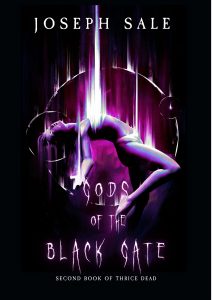 this series was actually a strength. In her review of the final book she wrote, “This is the ultimate clash of opposites. Masculine and feminine, war and beauty, love and hate, rivalry and respect, rebirth and annihilation all combine… The disgusting and nightmarish are strung together with passages of delicate petals and butterfly wings, of finer feelings that even the most monstrous, like Smiley, are capable of.” I have this quote pinned to my wall.
this series was actually a strength. In her review of the final book she wrote, “This is the ultimate clash of opposites. Masculine and feminine, war and beauty, love and hate, rivalry and respect, rebirth and annihilation all combine… The disgusting and nightmarish are strung together with passages of delicate petals and butterfly wings, of finer feelings that even the most monstrous, like Smiley, are capable of.” I have this quote pinned to my wall.
Sometimes you want consistency, but sometimes you don’t. Sometimes you want a pick ‘n’ mix. Sometimes you want a smorgasbord. Seeing this as a strength of the series changed how I handled it. Rather than trying to hide it, or shave down the weirdness in places, I turned it up to eleven.
Christa and Iseult also encouraged me to make the two strands of the series properly into one. That would mean deciding on a definitive “running order” of the books, which was not as easy as it sounds. And it would also mean making a few other key structural decisions, such as splitting Nekyia into two books: Horsemen of the Apocalypse and Queen of Last Hope. I liked the idea of five books because by this point I had studied the five act structure, but in the end I realised it was being too literal. If I’d decided on five, the middle book of the series would have been disproportionately gigantic, maybe even a stumbling block for a reader.
The other really big “problem” I now had was identity. The two arcs each had their own distinctive flavour. The Black Gate side of things was more science-fantasy and occult horror, whereas the “Nekyia” side of things was very much dark fantasy with biblical overtones (a la The Stand, which had left such a deep impression on me as an eighteen year old). Though it all came together, how to make it feel like one series and not two series smashed together?
I realised that I needed to do more work to strengthen the links between the two arcs.
DS: This reminds me of what you said in your article How To Build A Pyramid, about creatives asking the question “How are these two things linked?”
JS: Yes! I think the whole of Thrice Dead essentially came out of this question. I remember one question that haunted me throughout writing all the books was: what would happened if Smiley met The Prince? They’re both megalomaniacs, both tyrants, but in different ways. They’re both from Texas, though their cultural identities have been eroded by their supernatural experiences… It was a big question, and one I knew I had to answer at some point.
As I admitted earlier in this interview, I hadn’t mapped out the series from the beginning. It emerged organically. That meant there were minor discrepancies—things that I had forgotten to mention, a time-line issue, and whole raft of problems you wouldn’t have to deal with in a series that had been more thought out. I’m not complaining, because ultimately it’s this chaotic genesis that makes Thrice Dead what it is, but it meant a lot of revising was needed.
With the help of a certain fantastic indie-author called Dan Soule, I began to heavily edit the entire series. This was a solid six months of work. Pretty much focusing on this and little else. Other than the little fixes I’ve mentioned, there were two other major changes I made, one of which was entirely based on your feedback. The first major change was that I decided I needed to add an epilogue at the end of each book so that they flowed together, and to foreshadow more of the future plot points—a glimpse of what comes next. Jumping from the post-apocalyptic wasteland of America to the sci-fi future of a colonised Mars was too much to ask from my readers. I had to smooth these transitions. This also meant I added whole new scenes and dialogue; in particular, I overhauled the first three books. By book 4, I’d started to find my feet, and the last three books needed less work. But the first three got a lot of new content and major edits.
The second change was to add the Tarot readings at the start of each book (and there is also a reading at the end of the final book, so there are seven in total).
DS: Ah, was this based on me saying about having a framed narrative, the sort of “campfire story”?
JS: Yes! It was a brilliant idea. And I took it quite literally, haha. A mysterious character is telling the story of the Thrice Dead around a flame, guiding the reader through the strange journey. This allowed me to give each book a kind of introduction and once more smooth these transitions as we jumped between very different kinds of worlds. It was a little bit like having the Star Wars opening crawl text at my disposal. Or maybe the “narrator voice” in Jojo’s Bizarre Adventure. I wouldn’t normally resort to such a mechanism, but actually it was quite liberating! In addition, the Tarot element allowed me to foreshadow plot points in subtle ways, without being too overt. And of course Tarot ties in with the deeper meaning of the books. There’s also a nice little twist as to who the Tarot reader is at the end… But no spoilers.
DS: So, it sounds like you added a lot to the books and changed some parts entirely. But what about the actually job of publishing them, because that wasn’t straightforward was it?
JS: No! These books have had quite a journey. If you peruse the copyright pages, you’ll see how many different versions there have been of the books. For some, it’s four prior releases, all under different names. I had to get the rights back from various publishers, not just Dark Hall Press, and ensure certain contracts had officially terminated. I should say on this note, some reviewers have been talking about this series as “new”. I haven’t been correcting them, not because I’m trying to hide anything, but because if you add together all the factors, it essentially is new. The books were never released in this format, with these names, and they have whole new scenes (about 10,000 words per book, approximately). Ironically, or perhaps poetically, this series has undergone the very same transformation that is its through-line.
DS: We’ll come back to through-lines, but I wanted to ask you about covers. That was a major part of the re-release wasn’t it?
JS: Yes! And I’m not just blowing smoke up your arse when I say without the covers, specifically your expertly designed and coherent covers that gave an identity to the series, the re-release could not have succeeded on any level. As I said before, the strength of the series 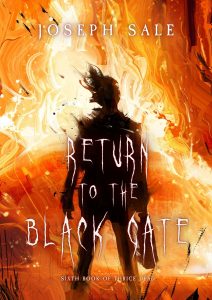 was its eclectic range, but this was a nightmare from the standpoint of giving them a coherent look. We needed to find an artist who could cover the significant ground Thrice Dead traversed. You recommended Warm Tail. I was familiar with them, but had never realised just how prolific and inspired their body of work is until that moment! You picked out six or so images. I think we ended up keeping four of them for the final versions and swapping in two others. We also re-ordered a couple of the images if I remember rightly. What I love is that just looking at the covers in sequence sort of tells the story of Thrice Dead, and once again this connects to the idea of Tarot, the power of the symbolic image—the magically charged image—to convey meaning to the unconscious directly.
was its eclectic range, but this was a nightmare from the standpoint of giving them a coherent look. We needed to find an artist who could cover the significant ground Thrice Dead traversed. You recommended Warm Tail. I was familiar with them, but had never realised just how prolific and inspired their body of work is until that moment! You picked out six or so images. I think we ended up keeping four of them for the final versions and swapping in two others. We also re-ordered a couple of the images if I remember rightly. What I love is that just looking at the covers in sequence sort of tells the story of Thrice Dead, and once again this connects to the idea of Tarot, the power of the symbolic image—the magically charged image—to convey meaning to the unconscious directly.
The final piece of the puzzle was the blurbs. I obviously had existing blurbs for each book in the series, but they were clumsy in the extreme. You helped me to re-write them and, again, give them coherency, so though we are exploring all these different worlds, we still feel the sense of a single story being told. In addition, you came up with the all-important comparison, maybe my favourite comparison of my work ever: “Think King’s Dark Tower meets Clive Barker’s The Great and Secret Show.” It really doesn’t get better than that!
DS: You earlier mentioned transformation is the through-line.
JS: Yes, though I’d also say redemption is the other through-line. I’ve always been more interested in villains than heroes. Most of the characters in The Book of Thrice Dead are bad people. Some of them are really, really bad. I asked myself the question, “What would it take to redeem someone like this?” The answer was radical transformation, the kind that can only occur under the baleful influence of the thirteenth arcana, Death. These people had to die, symbolically and literally, again and again, in order to be reborn.
Unwittingly, I’d actually stumbled upon one of the most important occult and mystical ideas (long before my proper initiation into this field), that the truly “enlightened” mind is in an eternal state of death and rebirth. Every single moment, every second, every instant, is an opportunity for total self-transformation and extasis. This is why the past has no hold on a guru, why they don’t hold grudges, and why they are not trapped by emotions. Contrary to popular understanding of “zen”, gurus and mystics still feel anger, lust, jealousy, all of those emotions, but they don’t linger upon them, because they are in such a state of alacrity, awareness, and mindfulness that they immediately seize the next moment, and the fog of emotion therefore passes and dissolves. This is the “power of now” popularised by Eckhart Tolle. It’s not a static serenity, but a ceaseless, beautiful vigilance and “aliveness”. Not a very eloquent word, but perhaps accurate!
DS: There are lots of occult themes in your work, but you seem to be saying that The Book of Thrice Dead almost predates your occult fascination?
JS: I’ve always been fascinated by the occult, but until relatively recently I was afraid of it, haha, as any right-minded person should be at first. But after several incredible and transformative spiritual experiences, I realised I could no longer run from this side of me. I had to face the shadow! In a strange way, I view The Book of Thrice Dead as preparatory ground for this confrontation and integration. Indeed, I read a lot of Jung at university and afterwards, and the idea of the Shadow, and integrating the Shadow-personality into the self, was constantly on my mind throughout working on virtually every instalment in The Book of Thrice Dead. As I said before, the characters are not heroes in the traditional sense, they are Shadows, dark mirror images, and thus they have been rejected by society—but of course, as Jung would say, the Shadow is “ninety percent pure gold”. The Shadow serves an important and deep purpose. Without it, we are nothing.
DS: So, Jung was one major influence. Were there any other influences?
JS: Oh yes! As I mentioned earlier, this series felt like a real alchemical cauldron-mix, with ingredients from all these seemingly dispirit sources. Obviously, there is a lot of Stephen King and J. R. R. Tolkien in there. Reading The Stand as an eighteen year old completely blew my mind and redefined my perception of what was possible in a novel. King’s Dark Tower series, which incidentally is based upon my all-time favourite poem by Robert Browning, Childe Roland To The Dark Tower Came, of course provided a lot of inspiration for the “multiverse” element.
As I grew older, I discovered Clive Barker, and once again he redrew the limits of the fictional  map! I couldn’t believe his prose. And the fecundity of his imagination sort of gave me permission to go as far as I dared in my own work.
map! I couldn’t believe his prose. And the fecundity of his imagination sort of gave me permission to go as far as I dared in my own work.
I’m heavily influenced by Japanese anime. The storytelling in anime is on another level. Their mastery of structure and story-beats is seriously worthy of study. But what I also love about Japanese anime is how unashamedly epic it is. In the west, we seem apologetic for “epic” narrative these days. For example, when was the last time you saw a fantasy movie at the cinema that wasn’t predominantly a comedy? There are a few out there, but they are a rare and beautiful species. Increasingly, we feel apologetic for our mythological heritage. Thor is a punchline, not a hero. I’m not against comedy, of course, and there’s some deliciously black humour in The Book of Thrice Dead, but I like my epic stories sincere. If you watch an anime like Attack on Titan (or read the manga), Hajime Isayama—the writer and artist—is not writing mere entertainment, he’s writing a myth, one that seems to explain the very epoch we live in. He’s paving the way and showing us that heroism isn’t dead, even with the coming of modernity. Startling really.
The one other big influence I haven’t mentioned yet is the Bible, particularly Genesis, in the Old Testament, and the Book of Revelation and gospel of St. John in the New Testament. I suppose you might say this shows a fascination with beginnings, middles, and ends! I also found the psychedelic yet deeply symbolic imagery of Revelation to be a rich ore to draw from, as have many other writers through the ages. The Christian story is of course the ultimate myth of resurrection, so it had to serve as the template for my own story. Please note, the word “myth” doesn’t imply that it isn’t true. Quite the reverse. As Coomaraswamy wrote, “Myth embodies the nearest approach to absolute truth that can be stated in words.”
DS: You’ve mentioned myth a few times. Is that what you’re aiming for with The Book of Thrice Dead?
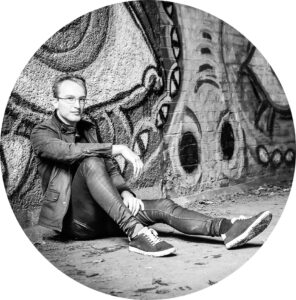
JS: Yes, I think so. I’m not so egotistical as to think I’ve achieved it, but the highest accolade I could receive—I think that any writer could receive—is for one’s work to become myth. Myths are the primary mechanism by which we understand the universe. To write a myth is to write something that becomes part of the collective unconscious, the collective mechanism humanity uses to comprehend its place in the stars. Now that is something to aspire to!
DS: Thank you for your time.
JS: Thank you so much for having me, Dan.


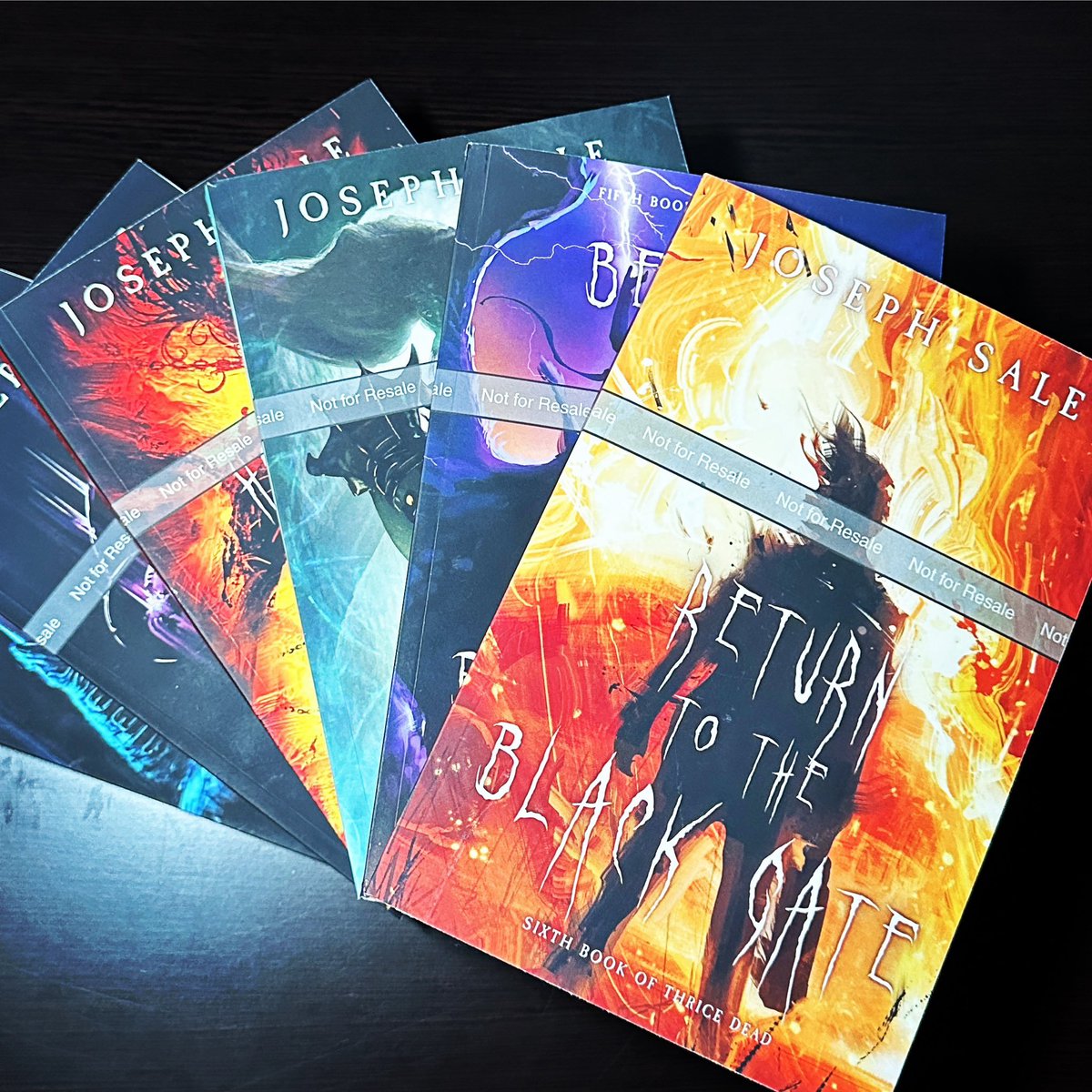
James Sale
Fabulous interview, full of insightful comments and useful advice for other writers on this journey.